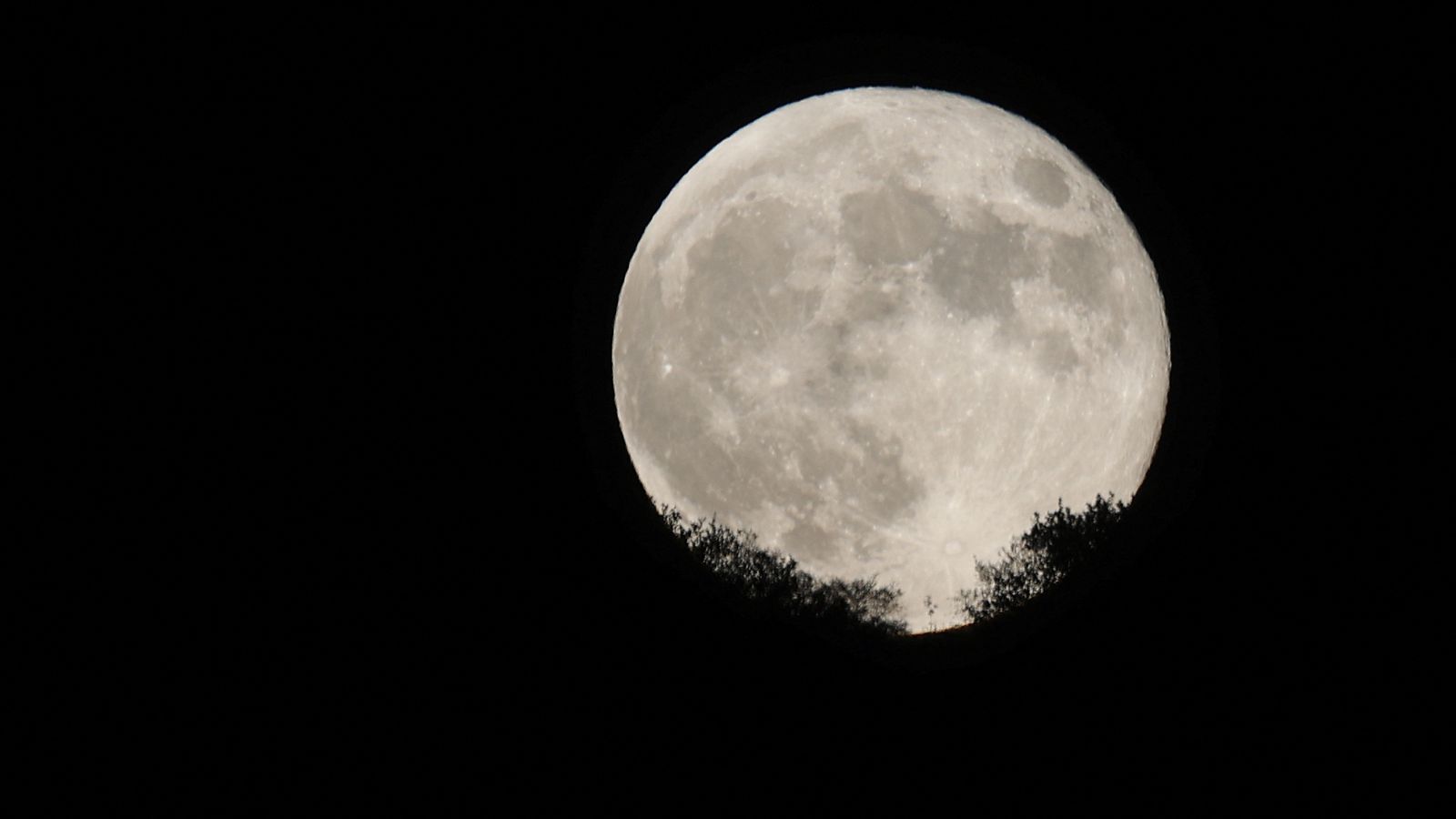This week offers the chance to see August’s second supermoon.
Stargazers were treated to a lunar spectacle right at the start of the month, and it will close with an even more spectacular showcase on Wednesday night – peaking at around 2.35am on Thursday in the UK.
This “blue moon” will be even closer to Earth, at 222,043 miles away, making it appear bigger in the sky.
This compares with a distance of about 252,088 miles when the moon is at its furthest point from Earth.
It will mark the first time in five years that two supermoons have appeared in the same month, a rarity astronomers don’t expect to see again until 2037.
How can I see it?
All you have to do is look up.
Unlike shooting stars or comets, which require a bit more thought around when and where you’ll want to head out to see them, supermoons are far from inconspicuous.
They can appear up to 14% bigger and 30% brighter than when the moon is further away from Earth.
So long as it’s not too cloudy, the Royal Observatory at Greenwich says anyone should be able to see the “unmistakable white orb in the sky”.
Of course, those with binoculars or a telescope could get an even more detailed view of the moon’s surface, and photographers are also encouraged to take advantage.
For the most impressive view, have a look at moonrise (just after sunset) or moonset (just before sunrise).
Please use Chrome browser for a more accessible video player
‘White orb’? I thought it was blue?
Confusingly, the blue moon moniker does not actually relate to its colour.
Typically, there is one full moon per month – and cultures around the world have given them each a name, though the most well known come from the Native Americans.
For example, August’s is the Buck Moon and September’s is the Full Corn Moon.
With Wednesday’s being an extra, it doesn’t fit into the normal naming scheme and so instead is a blue moon. There are other definitions of what makes a blue moon, but this is the most applicable to our normal calendar.
Its rarity is where the expression “once in a blue moon” comes from.
It’s worth remembering that not all blue moons are supermoons (when the moon is at its closest point to the Earth), which makes this one extra special.
Please use Chrome browser for a more accessible video player
What if I miss it?
This specific phenomenon – the second supermoon in a single month – won’t happen again for 14 years.
But there will be other supermoons and blue moons before then.
The next supermoon will be on 29 September, while the next blue moon is set for 31 May 2026.
Of course, the internet should be littered with pictures of this week’s lunar showcase by Thursday morning.
Read more science and tech news:
How heartbreak impacts the brain and body
The ‘Iron Man’ device worn by Novak Djokovic
Inside the UK’s biggest phone recycling facility
Be the first to get Breaking News
Install the Sky News app for free
The Virtual Telescope Project will also provide a webcast as the supermoon rises over Rome in Italy.
Astronomer Gianluca Masi, the project’s founder, has told viewers to expect big things.
“This one will be the largest of the year,” he said.
“Our satellite will be at its minimum distance from the Earth about 10 hours earlier.
“The resulting full moon will be the closest and brightest of the year.”










